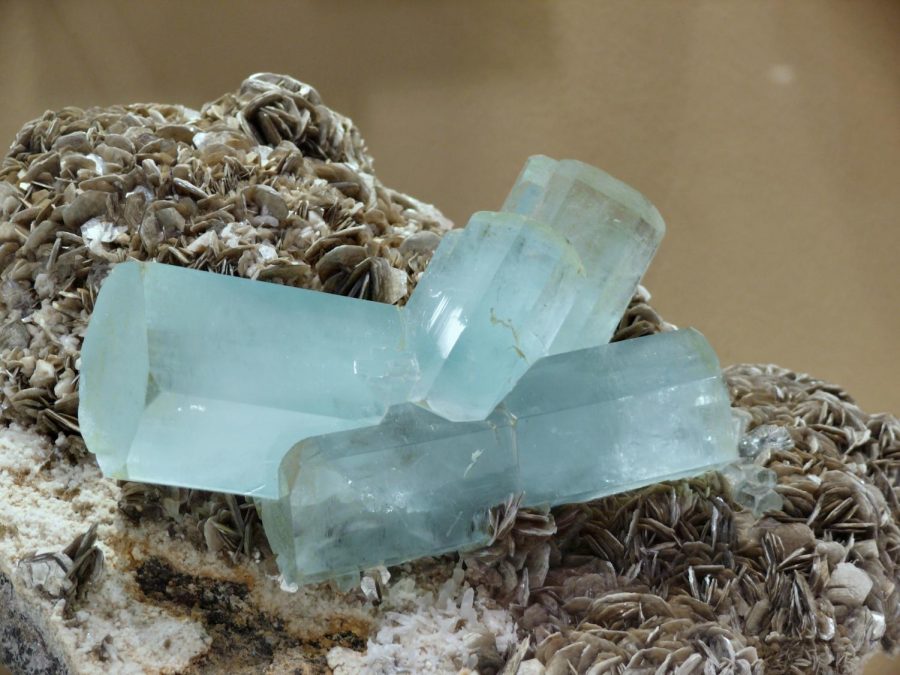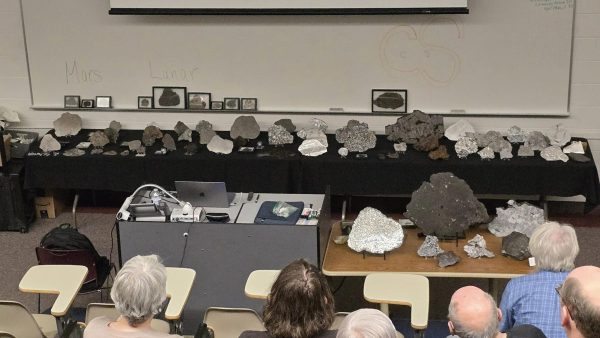Mineral Spotlight: Aquamarine
Credit: Photo courtesy Wikimedia Commons User Gunnar Ries Aquamarine is on display in the Dice Mineralogical Museum in North Hall.
This month’s birthstone, aquamarine, takes its name from its color, which ranges from pale blue to sky blue to greenish-blue. The name actually means “water of the sea” in Latin. Crystals of aquamarine can be quite large but vary in size. The largest specimen was found in Brazil and weighed 243 pounds and measured 19 inches long and 16 inches wide. Due to its internal structure, aquamarine forms hexagonal crystals that are usually prisms.
Aquamarine is actually one variety of the mineral beryl. Beryl has other varieties that vary in color, from green emerald to pink morganite and yellow heliodor. Aquamarine owes its blue color to trace amounts of iron in its chemical makeup.
Aquamarine is a common gemstone. Typically, for crystals to be considered gemstones, they must come in varying colors, be able to hold a shine, have a high hardness in order to resist scratching and make attractive jewelry.
There are many myths and ancient lore around aquamarine. To the Romans and Greeks, aquamarine was considered “the sailor’s gem.” Having aquamarine on ships crossing rough seas was thought to assure protection and bring good luck.
In medieval times, the stone was thought to rekindle love between married couples and join lovers together when worn as jewelry. Today, aquamarine universally symbolizes protection and safe travels for those who travel by water.
Buyers need to be careful if shopping for aquamarine. Light blue topaz can be mistaken for aquamarine. Aquamarine is more rare than blue topaz, so jewelers can falsely pass blue topaz for aquamarine and make more money. In general, light-colored specimens of aquamarine are relatively affordable.
The Bruce Dice Mineralogical Museum has several striking specimens of aquamarine and is open in North Hall every Wednesday, Thursday and Friday from 12:30–4 p.m.







